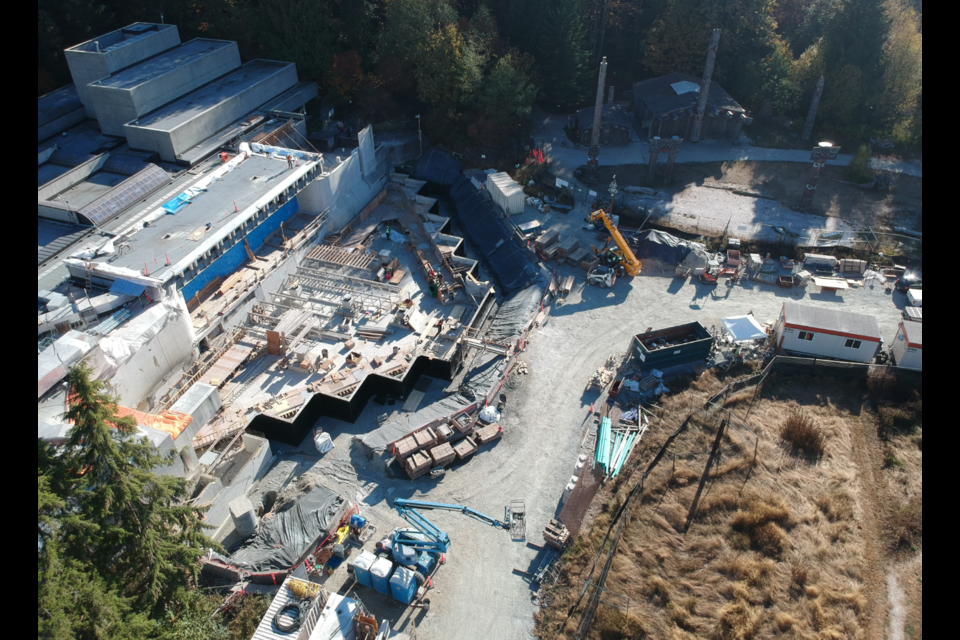China's demonstration HTR-PM reaches full power
09 December 2022
The demonstration High Temperature Gas-Cooled Reactor-Pebble-bed Module (HTR-PM) at the Shidaowan site in Shandong province of China has reached its initial full power with "stable operation under the mode of 'two reactors with one machine'".
.jpg?ext=.jpg) The site is on the coast in north east China (Image: CNNC)
The site is on the coast in north east China (Image: CNNC)The plant features two small reactors that drive a single 210 MWe turbine. It is owned by a consortium led by China Huaneng (47.5%), with China National Nuclear Corporation subsidiary China Nuclear Engineering Corporation (32.5%) and Tsinghua University's Institute of Nuclear and New Energy Technology (20%), which is the research and development leader.
They reported that it had reached "initial full power" on 9 December and "this operating state has verified that all systems of the demonstration project meet the design functions, laying the foundation for the project to be put into operation".
The Huaneng Shidaowan High Temperature Gas-Cooled Reactor Demonstration Project is the world's first pebble bed modular high-temperature gas-cooled reactor, and having achieved the initial full-power operation of the dual reactors and "tested the operation control capability" of it in "two reactors with one machine" mode, the operators describe it as "laying the foundation for future commercial operation".
The first reactor reached first criticality in September 2021 and the second one that November. The connection of the first of the unit's twin reactors took place in December 2021.
The HTR-PM features two small reactors (each of 250 MWt) that drive a single 210 MWe steam turbine. It uses helium as coolant and graphite moderator. Each reactor is loaded with more than 245,000 spherical fuel elements (‘pebbles’), each 60 mm in diameter and containing 7 g of fuel enriched to 8.5%. Each pebble has an outer layer of graphite and contains some 12,000 four-layer ceramic-coated fuel particles dispersed in a matrix of graphite powder. The fuel has high inherent safety characteristics, and has been shown to remain intact and to continue to contain radioactivity at temperatures up to 1620°C - far higher than the temperatures that would be encountered even in extreme accident situations, according to the China Nuclear Energy Association.
In an interview earlier this year for World Nuclear Association's World Nuclear Performance Report 2022, Lu Hua Quan, chairman of the Nuclear Research Institute, Huaneng Company, explained: "HTRs have the highest operating temperatures of all existing reactor types, and are also the only reactors that can provide very high-temperature process heat. In the near future, HTRs could be used as a new generation of advanced reactors and a supplement to China's nuclear power, for small and medium-sized modular nuclear power generating units."
He said that there was export potential, including to countries and regions where freshwater resources are scarce and for countries where the power grids are not suitable for nuclear plants of more than 1000 MWe. He added that "HTRs could in the future provide a source of high-quality high-temperature process heat for various industries, in particular those that are required to limit their carbon emissions".
The HTR-PM follows on from China's HTR-10, a 10 MWt high-temperature gas-cooled experimental reactor at Tsinghua University's Institute of Nuclear & New Energy Technology, which started up in 2000 and reached full power in 2003. Beyond the HTR-PM, China proposes a scaled-up version - HTR-PM600 - with one turbine rated at 650 MWe driven by six reactor modules.
Researched and written by World Nuclear News










